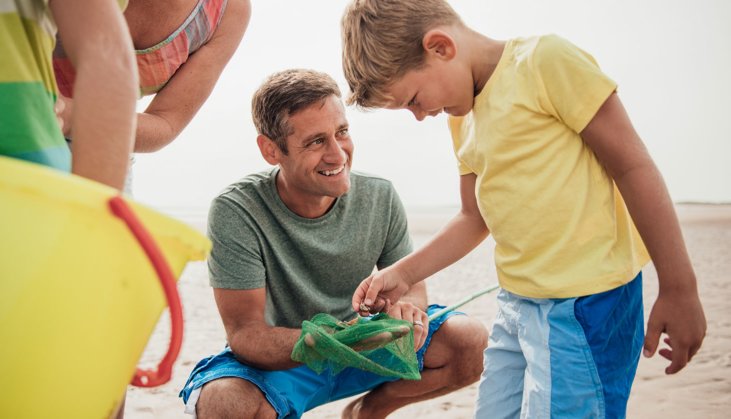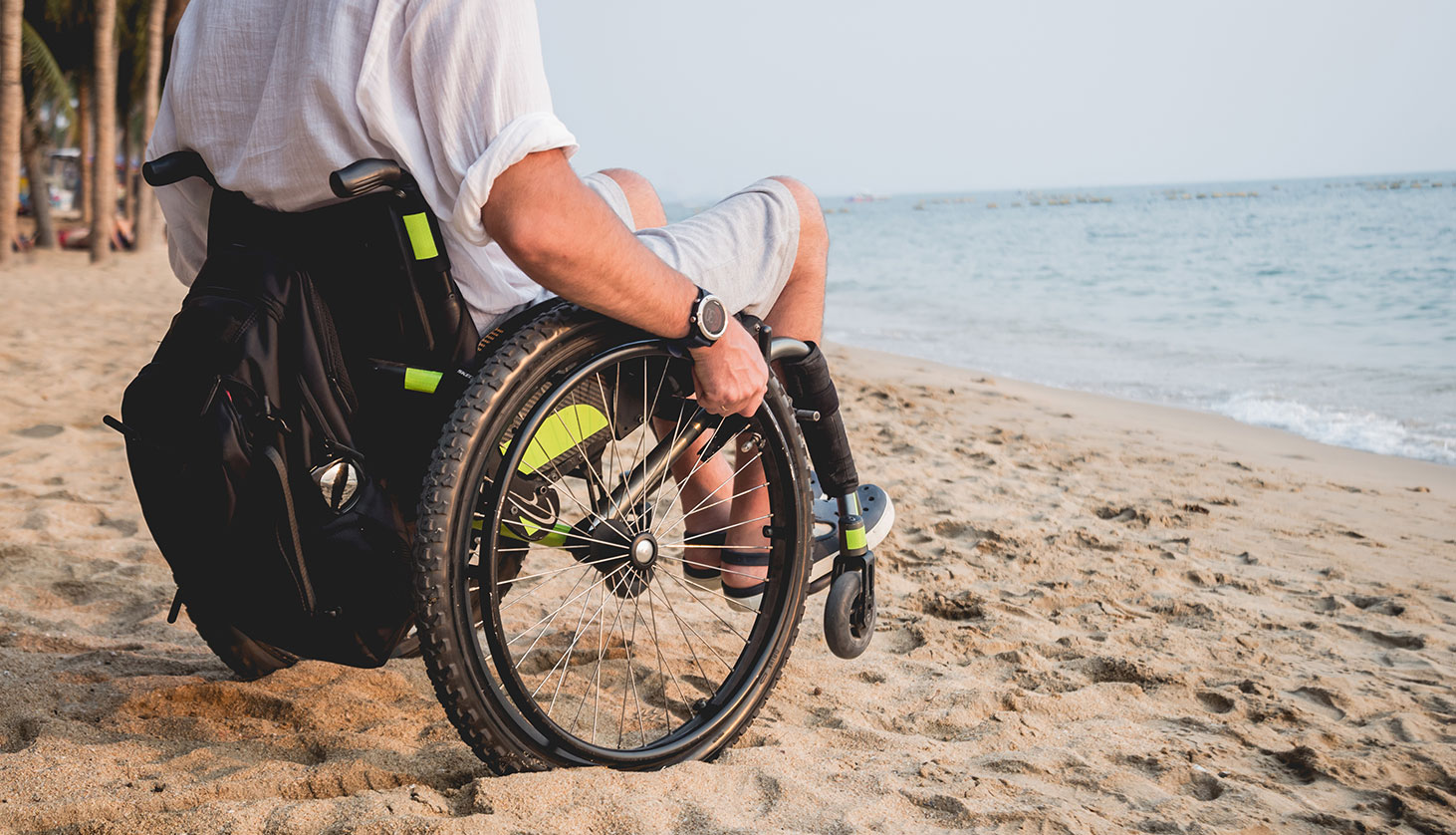When you’re on vacation, you and your family have a lot of options for activities and attractions.
Your beach vacation itinerary is likely full of boardwalks, restaurants, lighthouses and more. But when it comes to kid-friendly fun, sometimes the magic is in the simple pleasures — like finding a seashell in the sand.
Seashell hunting is a budget-friendly ocean activity that allows you to explore the shore with your kids. When collected responsibly, shells make great gifts, decorations and souvenirs. Shelling also presents an opportunity to teach your kids about science and marine life in a hands-on way. Read on to learn more about how to identify and collect shells, or jump to some printable seashell activities.
Marine Animals That Have Shells
With a few exceptions, the shells you see on beaches once belonged to mollusks. Mollusks, under the phylum Mollusca, are invertebrates with either internal or external shells. There are countless varieties of mollusk seashells all over the world. Most shells belong to mollusks that fall under the classes Bivalvia and Gastropoda.
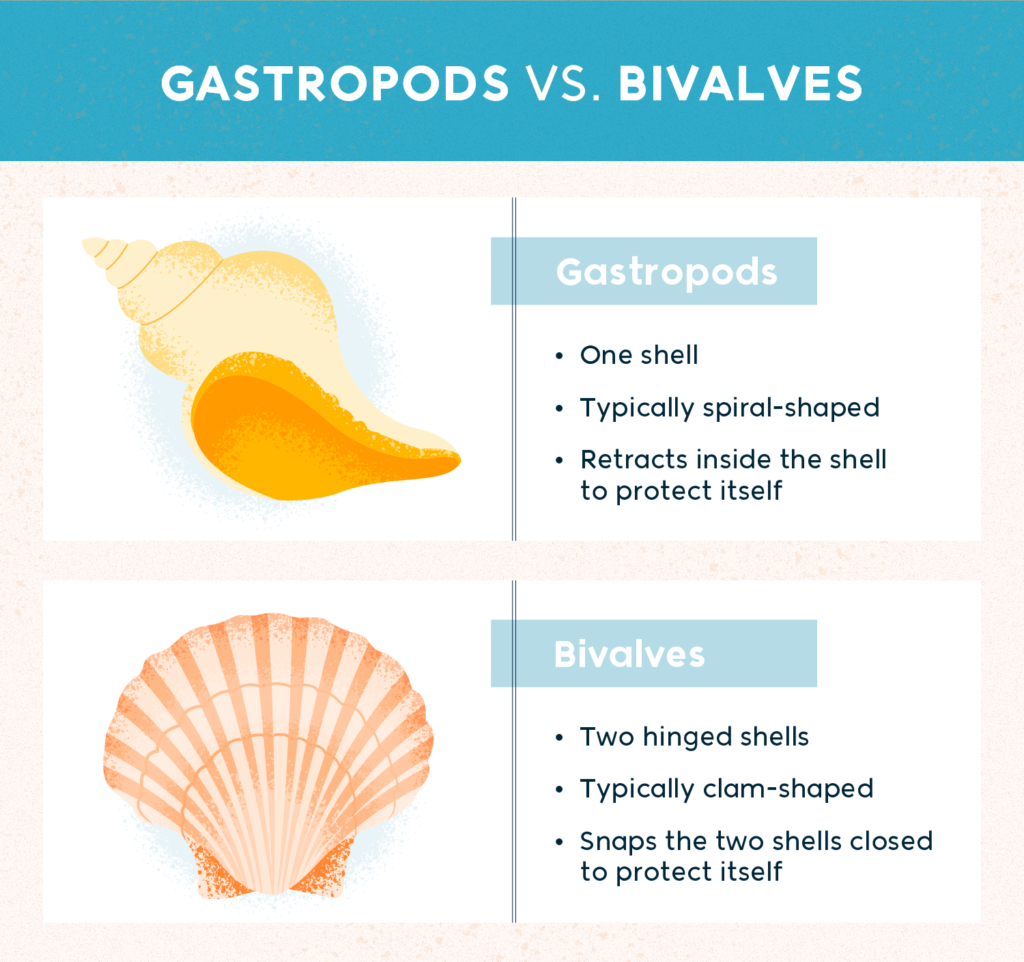
Gastropod means “stomach foot” because they use their soft body to both move and eat. These animals only have one shell which typically looks like a spiral. To protect itself, a gastropod retracts inside its shell. The most common animals in the class Gastropoda include:
- Limpets
- Slugs
- Snails
Bivalves are animals with two hinged shells. Their shells typically wash up on shore in two separate pieces. To protect itself, a bivalve closes its two shells. The most common animals in the class Bivalvia include:
- Clams
- Cockles
- Muscles
- Oysters
- Scallops
If your child finds a shell that still has an animal living inside — gastropod, bivalve or otherwise — tell them to leave it alone. In many places, including Florida, it is illegal to take a live creature from its natural habitat.
What to Bring to the Beach
The great thing about seashell collecting is that you really don’t need anything other than a sharp eye and curiosity. However, having a few things on hand (and foot!) will make the experience a lot more enjoyable.

- Shovel: Any kind of shovel will come in handy when digging for seashell treasures. You can even look for special shelling shovels that allow sand to sift small through holes, leaving only the shells behind.
- Fine mesh bag: Once you decide to keep a shell, you’ll want to have a bag on hand to carry it in. A fine mesh bag will allow excess water to drip out, making for mess-free shell collecting.
- Net: Carrying a net with a long handle will allow you to scoop up shells that roll in with the waves. Just be extra careful that you don’t keep any shells with living animals still in them and make sure the holes in the net are small enough to catch more petite shells.
- Polarized sunglasses: Any sunglasses are a beach necessity, but polarized ones will allow you to spot shells more easily. This is because they sharpen and clarify your vision while reducing the sun’s glare off the water.
- Water shoes: Broken shell fragments can be sharp, making it dangerous to walk barefoot on some beaches. Flip flops or sandals are a great place to start, but water shoes will offer optimal protection.
- Scavenger hunt checklist: To learn more about marine creatures and their shells, print out our fun seashell scavenger hunt checklist! Continue scrolling or click here to download.
Once you’re all geared up, you’re ready to get shelling. But first, familiarize yourself with some best practices.
Seashell Collecting Tips and Best Practices
To set your family up for shelling success, you’ll want to keep a few things in mind. Take your time when you’re scanning the beach — rushing will cause you to skim over treasures! Bring the whole family and follow these simple rules:
- Go early in the morning. If you can get up early enough, the benefits of sunrise shelling are plentiful. The beaches are untouched by tourists, the sun isn’t too hot, and the tides are usually low. The morning after a storm is optimal shelling time, as turbulent water causes even more shells to wash up on shore.
- Take the road less traveled. Look behind boulders or inside hollow logs. You never know where a seashell may be hiding that hundreds of other people overlooked.
- Search where the sand is wet. Specifically, search along or below the wrack line. This is where shells, kelp and other sea life was deposited at high tide the night before. If you search too far above the wrack line, shells will likely be bleached and not as vibrant.
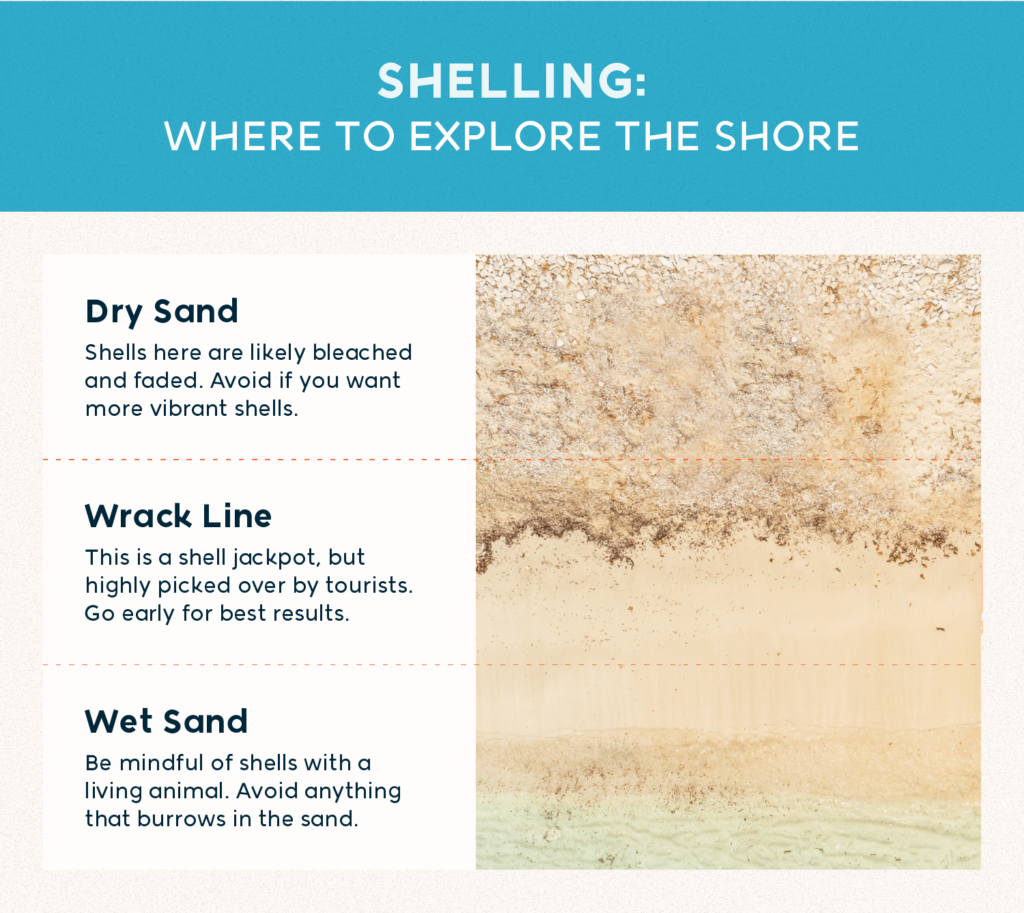
Cleaning and Storing Your Seashells
Once your child has amassed a sizable seashell collection, you’ll want to teach them how to properly clean them to bring out their full natural beauty.
The first step is to soak your seashells to remove any dirt, debris and smell. Many sources will tell you to use bleach, however, this will ruin the color and vibrancy of your shell and the smell will stubbornly linger. A simple soak in water will work just as well. Flush out the water daily for up to a week to fully clean your shells. Use an old toothbrush to remove grit from the ridges and cracks if necessary.
After your shells have soaked for a week, you’ll need to thoroughly dry them. If your shells have particularly rough edges, you can smooth them down with sandpaper, although this step is optional.
To add the finishing touch and really bring out the brilliance of your shells, rub a small amount of mineral oil on a paper towel and buff the shells until they shine. This will ensure your shells look beautiful in any setting and last a lifetime.
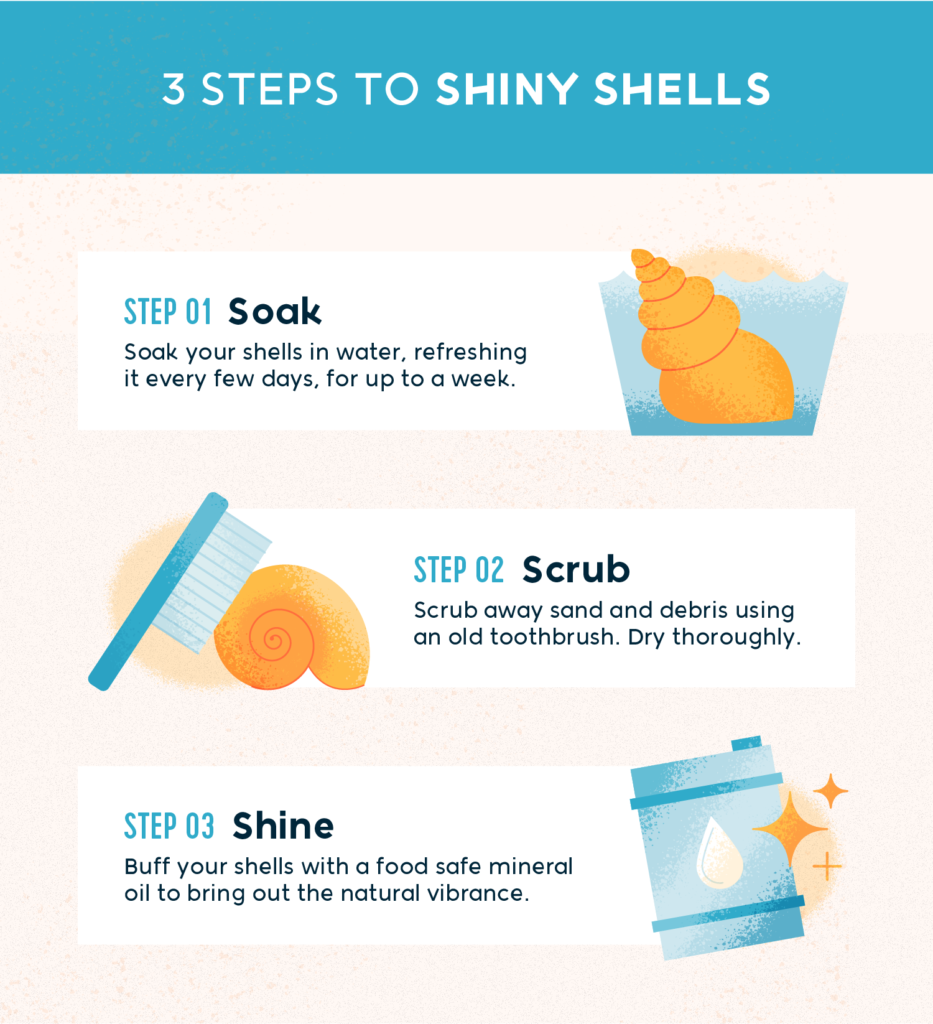
To ensure the longevity of your seashell collection, store them in a dark place. Sunlight is the number one cause of seashell fading. If you want to really want to make them last, store them in a glass or plastic container, safe from dust. Shells are delicate and will inevitably fade over time, but the less they are handled and exposed to the elements, the longer they’ll last.
Printable Seashell Activities
Now that you know all about when and how to collect seashells, it’s time to get hunting! Print out this seashell scavenger hunt and have your kids check off the shells as they find them. Consider laminating the sheet for extra durability and protection from sand and saltwater.
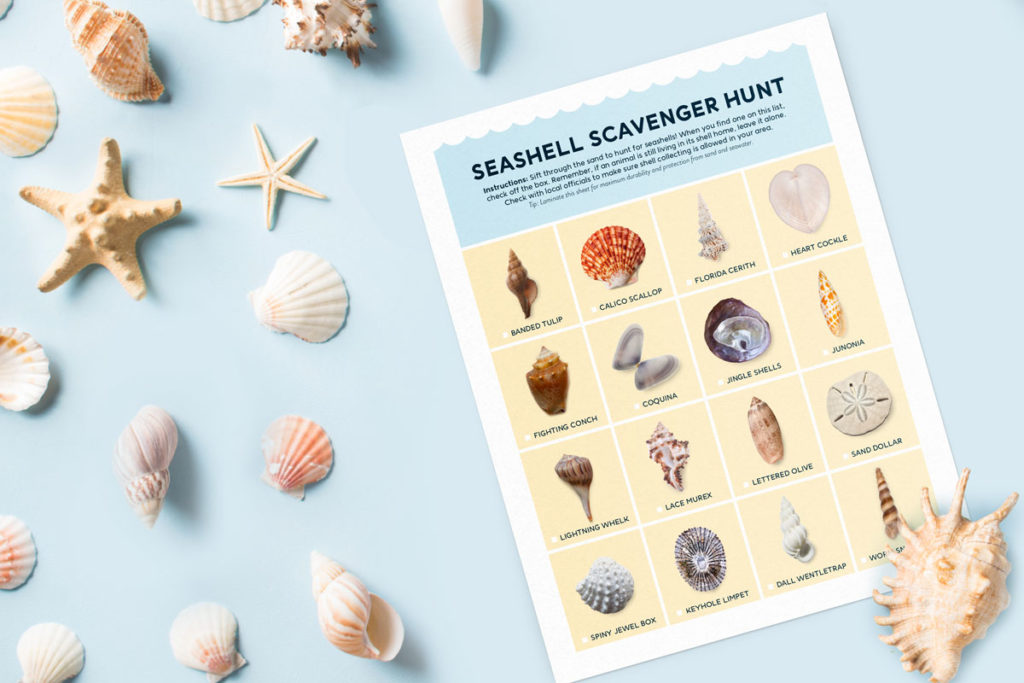

To help your child become the ultimate seashell expert, print out these double-sided flashcards. Quiz your child on each shell until they have them all mastered. The next time you go seashell hunting, identifying shells will be a snap! For easiest identification, make sure your printer is set to color and use a good quality cardstock.
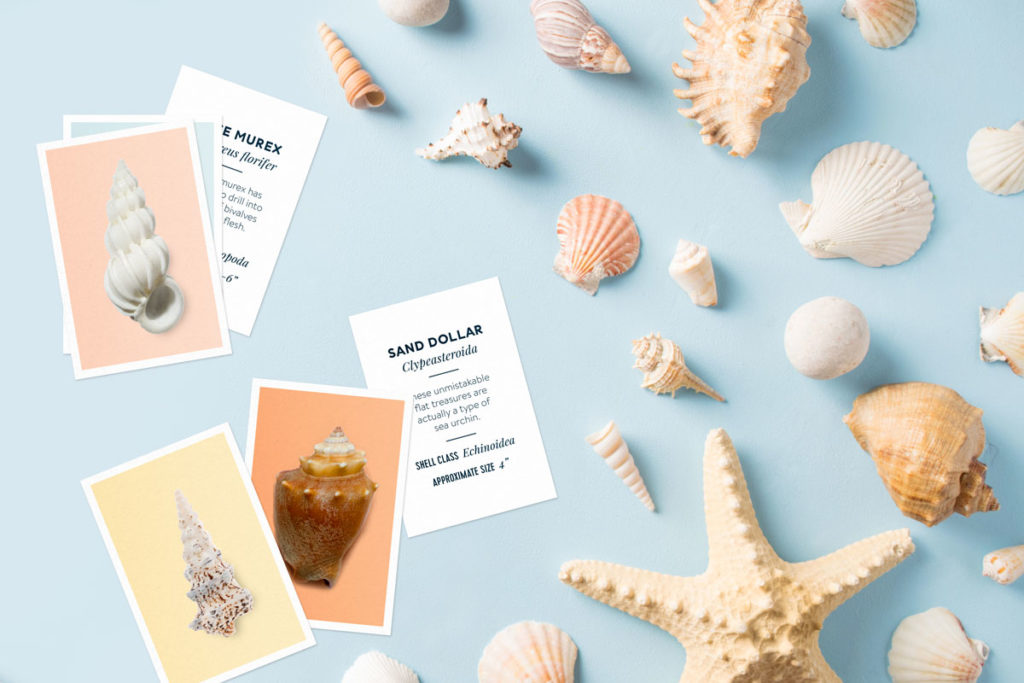

Seashells are nature’s treasures. Collecting them with your family makes lasting memories and leaves you with beautiful souvenirs. The next time you book a beach trip, remember to pencil in a day of seashell hunting.
Sources: National Shell Museum | SciName Finder

